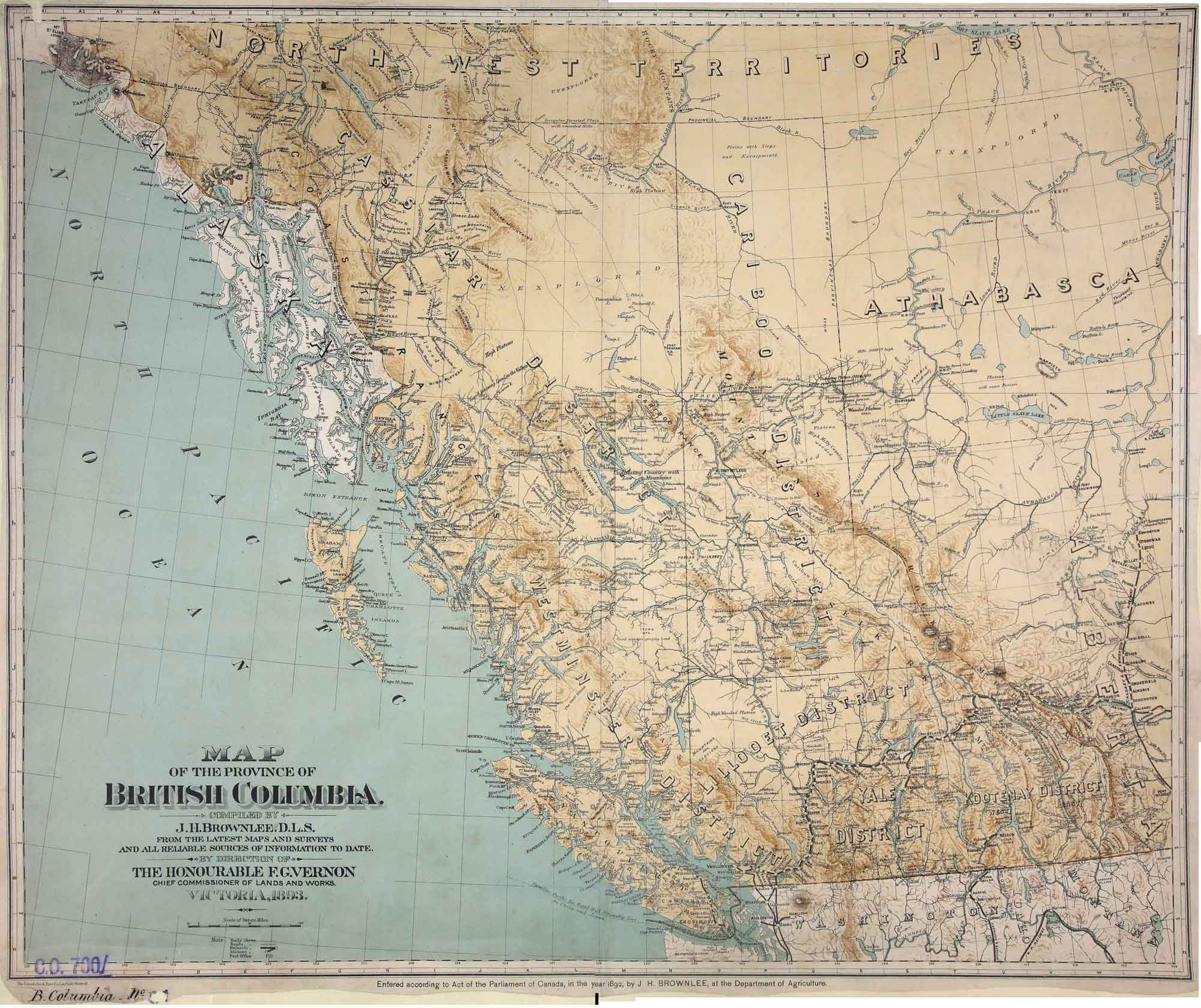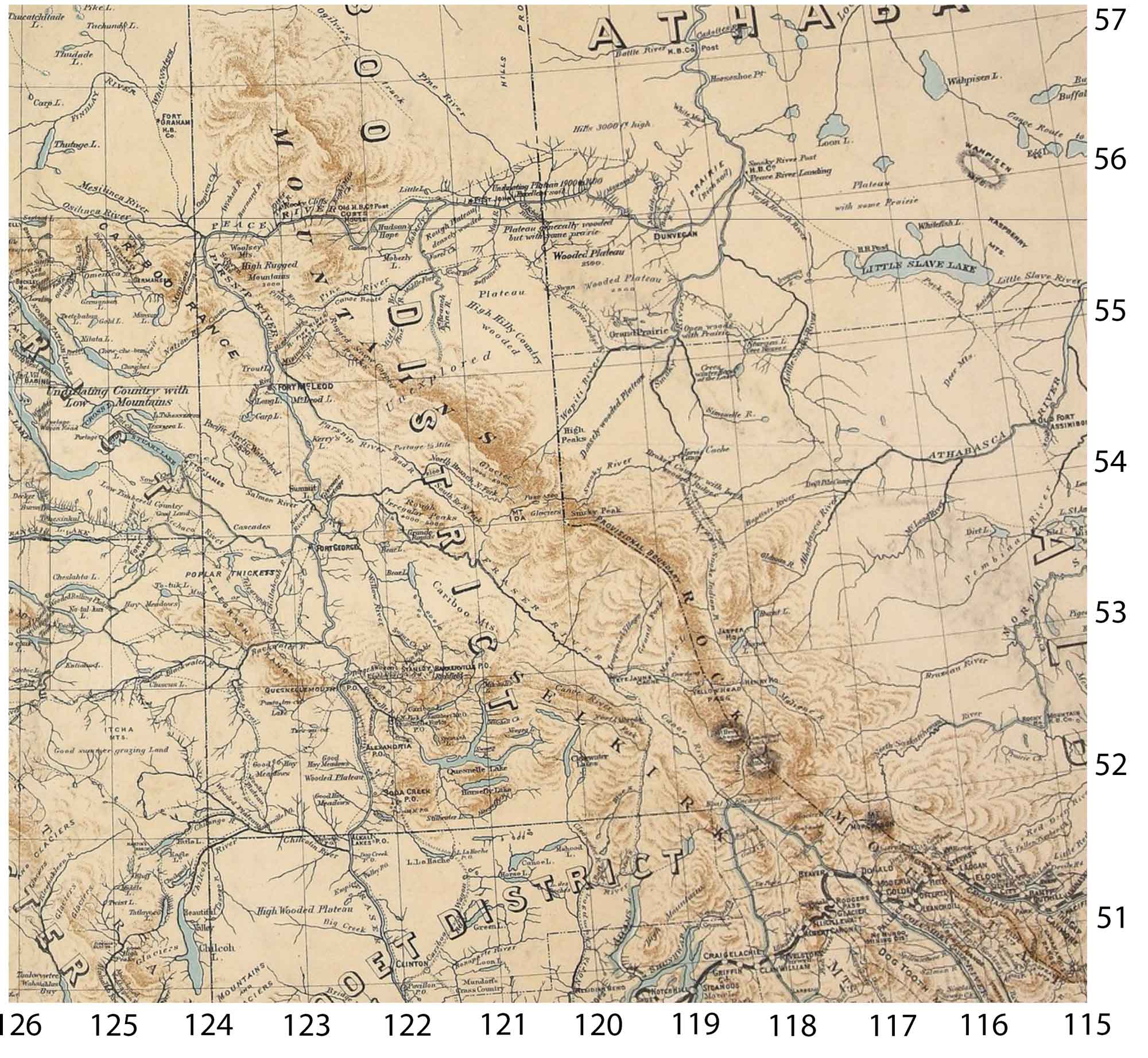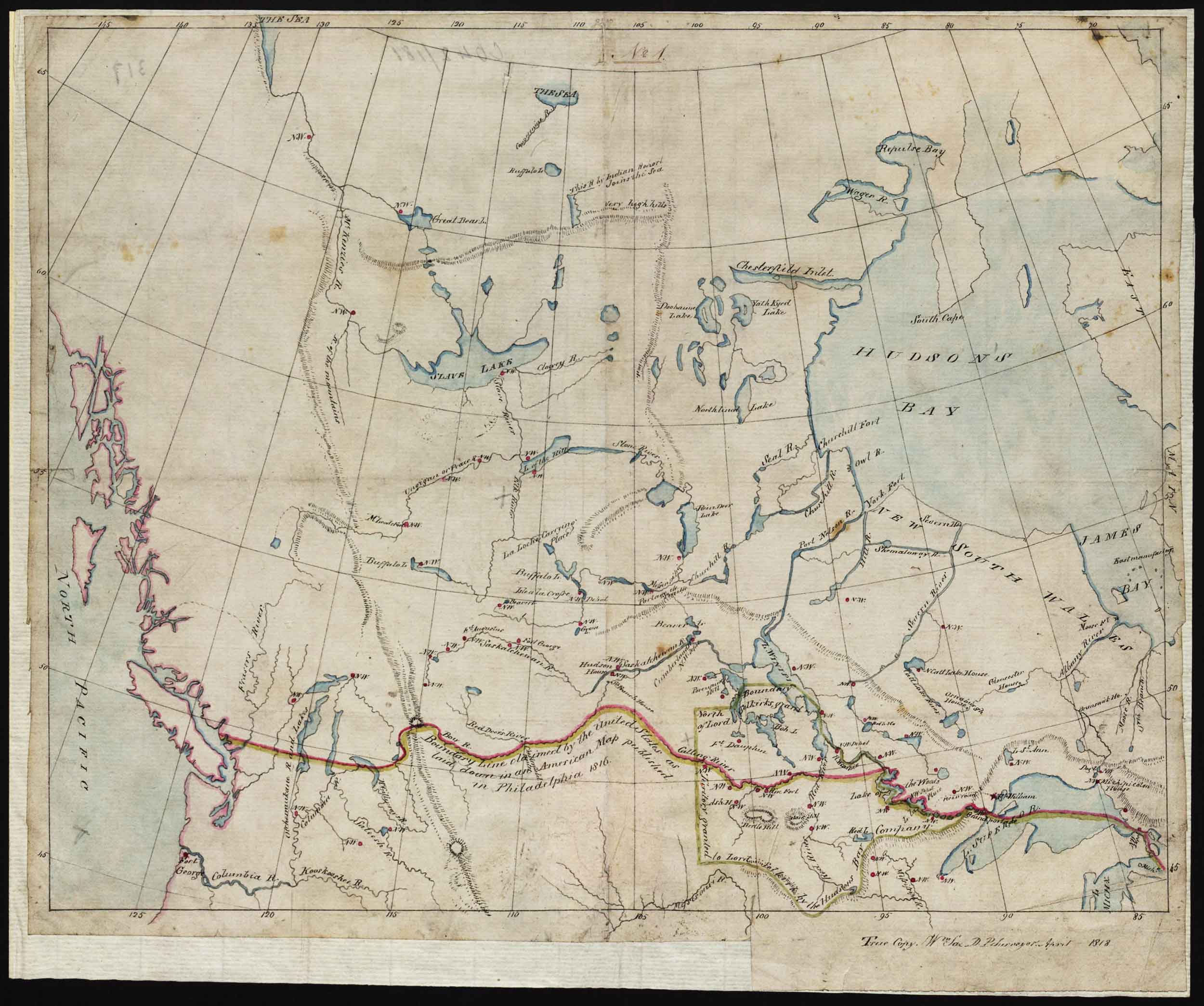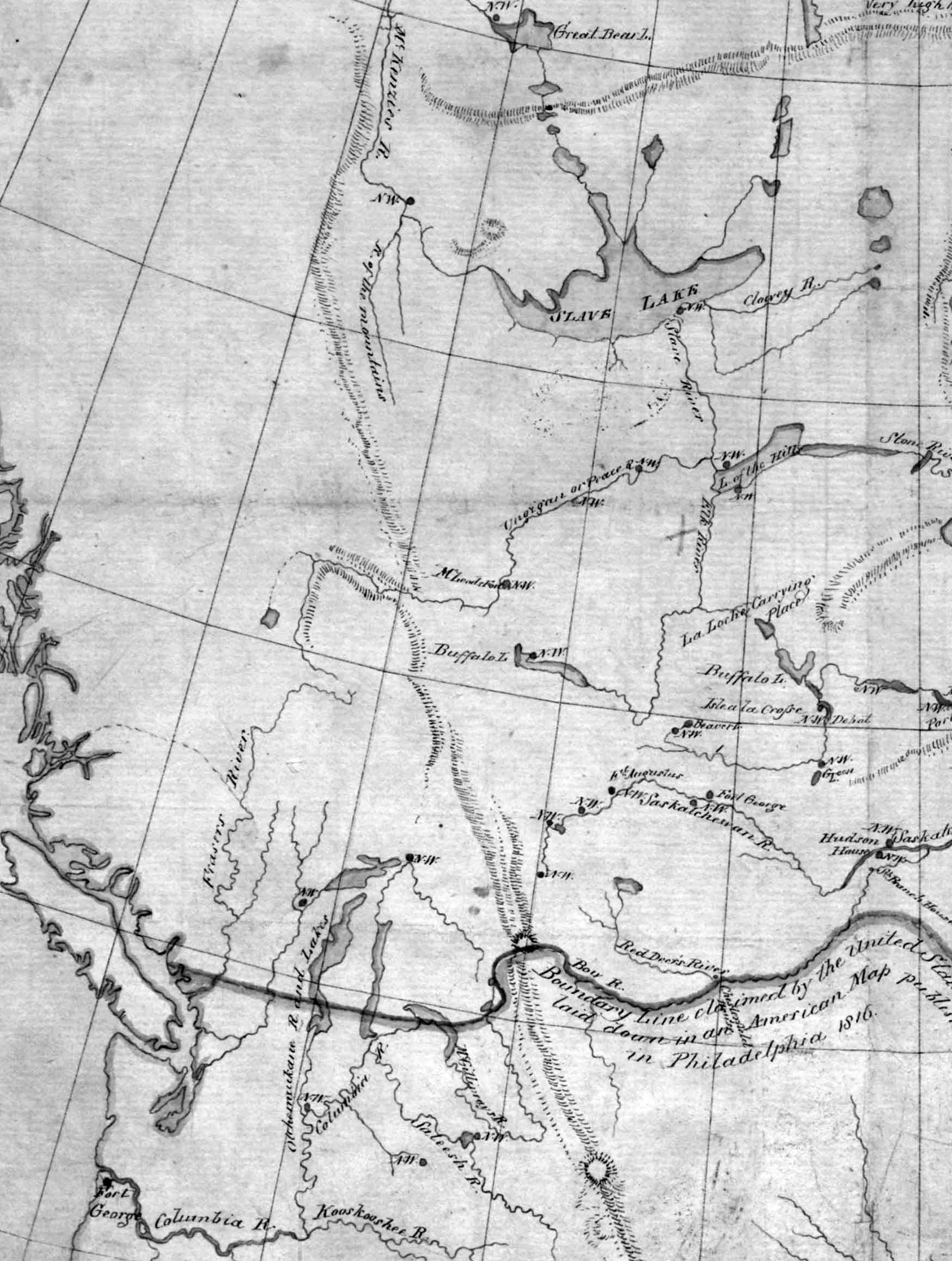Flows NW. into Fraser River, W. of Eaglet Lake
54.0864 N 122.5078 W — Map 093J02 — Google — GeoHack
Name officially adopted in 1936
Official in BC – Topo map from Canadian Geographical Names

Map of the Province of British Columbia. Compiled by J. H. Brownlee, D.L.S., from the latest Maps and Surveys and all reliable sources of information to date.
UVic Libraries

Detail of map of BC compiled by J. H. Brownlee, D.L.S.
UVic Libraries
Map of the Province of British Columbia.
Compiled by J. H. Brownlee, D.L.S.
From the latest Maps and Surveys and all reliable sources of information to date.
By direction of
The Honourable F. G. Vernon,
Chief Commissioner of Lands and Works.
Victoria, 1893.
Lithographed by the Canada Bank Note Co. Limited, Montreal.
Physical repository: National Archives (Great Britain)

The First Canadian Pacific R.R. and Geological Survey parties for British Columbia, July 22 1871 Left to right : L. N. Rheaumis, Roderick McLennan, A. S. Hall, West West Ireland, Alfred Selwyn, Alex Maclennan, Walter Moberly, C. E. Gilette, James Richardson, — — McDonald, George Watt.
Toronto Public Library
Walter Moberly, C.E. [1832–1915]
b. 1832
d. 1915
Walter Moberly [1832–1915] was a civil engineer and surveyor who played a large role in the early exploration and development of British Columbia, including discovering Eagle Pass, now used by the Canadian Pacific Railway and the Trans-Canada Highway.
Rylatt was born in Lincoln, Lincolnshire, around 1840, a son of a boatman and the oldest of 11 children. After enlisting in the Royal Engineers and serving in the Crimean War, he was transfered to the Columbia Detachment, responsible for the foundation of British Columbia as the Colony of British Columbia (1858–66). After five years in British Columbia he was discharged with an Exemplary Character with eleven years’ total service.
In 1871 Rylatt was recruited by fellow Royal Engineer veteran Walter Moberly [1832–1915], who was in charge of S party of the Canadian Pacific Railway Survey. Rylatt served as quartermaster for the party until 1873, when he got word that his wife had died. He wrote a memoir of the trip for his family, now published under the title Surveying the Canadian Pacific — Memoir of a Railroad Pioneer(1).
Upon starting, our party consisted of 4 officers (surveyors), 16 men, principally axeman about one half of them Canadian, 8 Mexican and Indian Packers, and one hunter for the party — a Bavarian. There were 45 animals in the Pack Train, each carrying about 300 pounds.
S Party spent winter 1871-72 on the Columbia River near the Blaeberry River at the west end of Howse Pass. Moberly, who had spent the winter in Ottawa, arrived at their camp on June 16th. The ‘S’ party spent the entire season moving their equipment, supplies and pack trains through the Athabasca Pass, and north, arriving in January at the east end of the Yellowhead Pass, which Rylatt consistently called the Leatherhead Pass. On May 13, 1873, Rylatt set off through the Yellowhead Pass with one companion and three horses, reaching Kamloops on June 14. Rylatt continued on by stage to his home at New Westminster.
And now, my reminiscence is done. I might go on to state I found an empty house, my goods intact but stored in a ware-house. My return to my empty home, and the replacing of everything therein as it used to be in the days that were gone. My sad thoughts as l lay stretched upon the bed my poor wife had breathed her last upon. My many visits to her grave, and my final sale of home and belongings, and my wandering away to seek another home, under another government. But to what end?
Robert M. Rylatt
On the 2d November (my birthday by the way), I reached the depot

Map of Indian Territories to accompany the report of the Coltman mission. William Sax, 1818. The red horizontal line is “Boundary line claimed by the United States as laid down in an American map published in Philadelphia 1816.” Library and Archives Canada [accessed 19 February 2025]

North America. The continent west of the Great Lakes north of about 45°N. Detail Library and Archives Canada [accessed 19 February 2025]

Detail of Peace River Library and Archives Canada [accessed 19 February 2025]
William Sax [1774–1840], First Clerk in the Surveyor General’s Office of Canada, was active ca. 1795 – 1835. He drafted this map to accompany the 1818 report of William Bacheler Coltman, commission of the peace for the Indian territory of the northwest, regarding the struggle between the Hudson’s Bay Company and the North West Company for hegemony in the fur trade.
Walter Alfred Don Munday [1890–1950]
b. 1890 — Portage la Prairie, Manitoba
d. 1950 — Vancouver ?
Walter Alfred Don Munday was a Canadian explorer, naturalist and mountaineer famous for his explorations of the Coast Mountains with his wife Phyllis Munday [1894–1990], and especially for the exploration of the Waddington Range.

Survey of Telegraph Creek and upper part of Shuswap River near Tete Jaune Cache, May 1865.
University of Victoria
Fur-trading district.